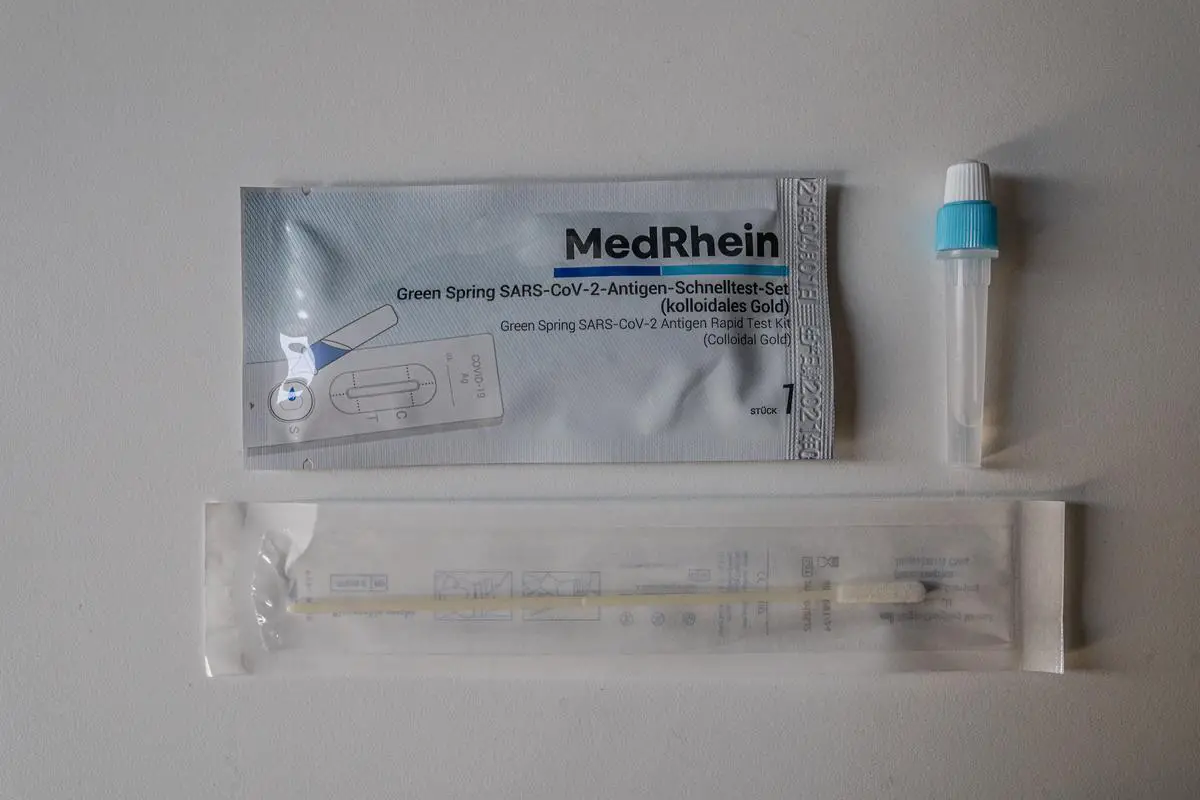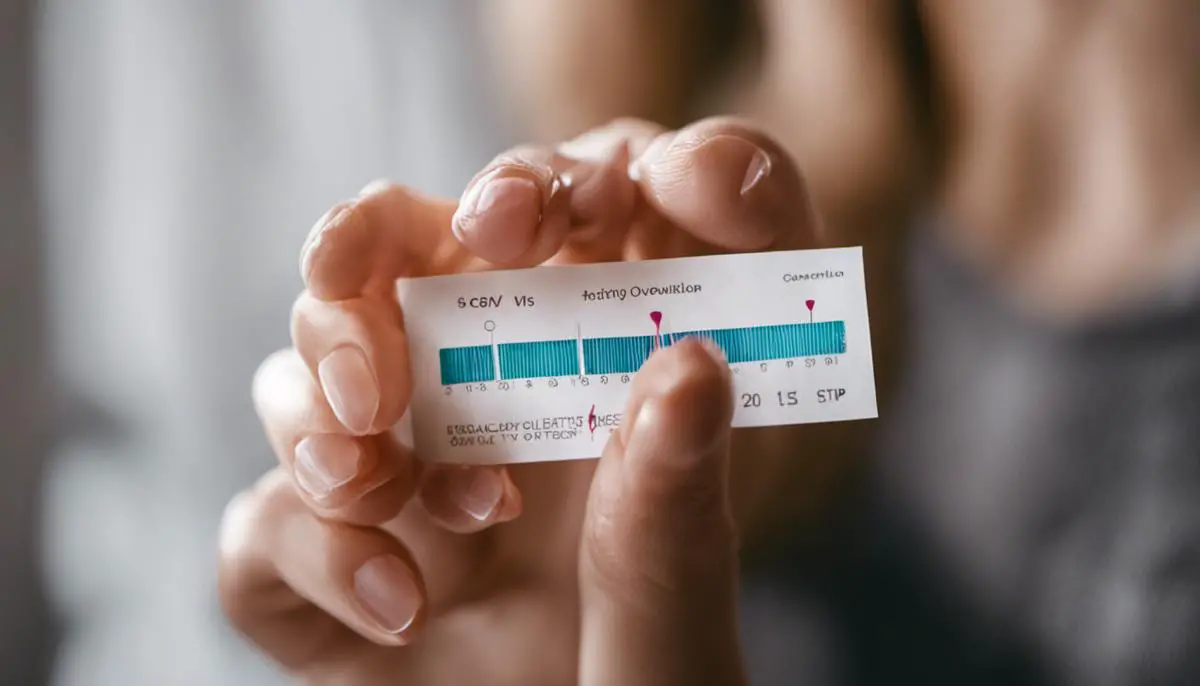Understanding bodily processes is a key aspect of achieving certain personal goals. As such, familiarizing oneself with ovulation and its nuances becomes vital for women striving for conception. This detailed discourse will delve into the physiological significance of ovulation, the role ovulation test strips play in assessing fertility, and the correct interpretation of these results. The exploration will deconstruct potential errors and misconceptions that could lead to misunderstanding or misinterpretation of ovulation test results, paving the way for informed decisions and effective planning.
Understanding Ovulation and Why It is Important
What Is Ovulation and Why Is It Important?
Ovulation is a biological process that occurs in women every month. This process is part of the menstrual cycle where a mature egg is released from the ovaries. This egg travels down the fallopian tube where it can meet a sperm and fertilize, leading to the start of a potential pregnancy. The period in a woman’s cycle when she is most fertile is often referred to as her ‘fertile window’, which usually falls around ovulation. Understanding when ovulation occurs can be essential for understanding a woman’s cycle and improving chances of conception.
Understanding the Physical Signs of Ovulation
Several physical signs signal ovulation is about to happen or has happened. These can include a noticeable increase in cervical mucus, often compared to the consistency of egg whites. Some women may also experience mild pelvic discomfort or a slight increase in libido. Other more subtle signs might include an increase in body temperature or a change in the position or feel of the cervix. However, these signs can be subtle, vary between individuals and are not always consistent.
Why Use Ovulation Test Strips?
Enter ovulation test strips, a home test that detects the rise in luteinizing hormone (LH) levels in a woman’s urine. This LH surge typically occurs 24-48 hours before ovulation, signaling the ovary to release the egg. These strips can provide a more accurate indication of ovulation than physical symptoms alone. Knowing the time frame of ovulation can be invaluable for couples trying to conceive, as it enables them to plan intercourse during the woman’s fertile window.
Understanding Results from Ovulation Test Strips
To use an ovulation test, a woman simply pees on the applicator or dips the applicator in her urine, then waits for the test to display the result. A positive result – often shown as two lines where one line may be darker or the same color as the other – indicates the LH surge has occurred, suggesting that ovulation will likely happen within the next 24-48 hours. A negative result – displayed as one line, or two lines where one line is lighter – means no LH surge has been detected. The results should be read within the timeframe stated in the instructions to avoid misinterpretation.
Understanding the Outcomes of Ovulation Test Strips
Individual responses to ovulation test strips can vary widely. This is because every woman’s luteinizing hormone (LH) surge – a key indicator of ovulation – doesn’t occur at the exact same time and can differ in duration. Thus, for some women, a brief LH surge might go undetected if they’re testing just once a day, while others may undergo a more elongated surge. It’s also crucial to bear in mind that these test strips aren’t infallible. They can sometimes provide false positive or negative results due to fluctuating LH levels, hormonal disparities, or even mishaps during usage or result interpretation. For these reasons, it’s recommended to use ovulation test strips in combination with other fertility tracking methods. Moreover, a positive result on an ovulation test doesn’t ensure conception; it simply indicates the likelihood of ovulation in the near future.

What are Ovulation Test Strips
Defining Ovulation Test Strips
Ovulation test strips, often referred to as ovulation predictor kits, allow you to perform a straightforward hormone test from the convenience of home. Their job is to detect any changes in specific hormones – particularly, luteinizing hormone (LH) – in your urine. A significant rise in LH typically takes place about one to two days before ovulation – when an egg is released from an ovary. The test strip employs LH-specific antibodies that, when they encounter the hormone in your urine, trigger a color change on the strip.
The Science Behind Ovulation Test Strips
Ovulation test strips operate under the principle of immunochromatography, which pertains to the movement and interaction of particles in a specific medium. When urine is applied to the strip, it travels up the strip, causing the colored particles, coated with anti-LH antibodies, to mobilize. If there is LH in the urine, it binds to the antibodies on the particles, creating a color change. This indicates a positive test and forecasts the likelihood of imminent ovulation.
Difference between Ovulation Test Strips and Pregnancy Tests
Although ovulation test strips and pregnancy test strips may appear similar, they measure different hormones and interpret those levels for two separate purposes. Ovulation strips detect the surge in LH that precedes ovulation, thereby helping predict the optimal time for conception. On the other hand, pregnancy strips identify the hormone human chorionic gonadotropin (hCG), which is produced after implantation of a fertilized egg. While both tests employ similar technology, their purposes and the hormones they detect are distinct.
How to Use An Ovulation Test Strip
To properly use an ovulation test strip, collect a sample of urine in a clean container at the same time each day. Immerse the absorbing end of the strip into the urine sample for the amount of time specified by the product instructions, typically around 10 seconds. Then, place the strip on a flat, dry surface and wait for the designated time, usually five to ten minutes, to read the results.
Understanding the results typically involves comparing the test line to a control line. If the test line is as dark or darker than the control line, this indicates a positive result – meaning LH surge is present and ovulation is likely to occur within 12 to 36 hours. A lighter test line or no line at all means the test is negative, suggesting LH surge is not present. Understanding how to read and interpret the results correctly is integral to using ovulation test strips effectively.
Interpreting Ovulation Test Strip Results
Understanding the results of ovulation test strips hinges on several factors such as consistent usage, optimal timing, and accurate result interpretation. These test strips are generally reliable for a majority of women, although there can be exceptions. For instance, some women may exhibit a surge in Luteinizing Hormone (LH) without ovulating, and conversely, some might ovulate without a detectable LH surge. Medical conditions, like Polycystic Ovarian Syndrome (PCOS), can also alter the accuracy of these tests. Therefore, consulting healthcare providers can be instrumental in comprehending personal fertility and ovulation cycles.

Interpreting Results of Ovulation Test Strips
Basics of Ovulation Test Strips
Also known as Ovulation Predictor Kits (OPKs), ovulation test strips are uncomplicated home-based tests designed to identify your fertility window. They operate by detecting a hormone named Luteinizing Hormone (LH) prevalent in your urine. An increase in LH levels typically occurs 24 to 36 hours before ovulation, representing the prime time for fertilization. Understanding these basics can aid in accurate reading and interpretation of ovulation test strip results.
Interpreting Results
Understanding the result of an ovulation test strip mainly depends on the intensity of the test line compared to the control line. If the test line is faint or less visible than the control line, it means that the test is negative and you are not yet about to ovulate. If the test line is as dark or darker than the control line, the test is positive, indicating that you are likely to ovulate within the next 24 to 36 hours.
Color Variations
The degree of color intensity of the test line can vary based on the LH concentration in your urine. As the ovulation date gets closer, the test line becomes darker, eventually matching or exceeding the control line’s color intensity.
Common Mistakes While Interpreting Results
One common mistake that many make when interpreting the results of ovulation test strips is reading the test after the recommended time frame, usually about ten minutes. This can lead to a false positive or a false negative result due to the strip drying. Another common error is not using urine from the optimal time of day, usually afternoon or early evening, as some might have a surge in LH later in the day.
After Getting the Results
After getting a positive result (the test line is as dark or darker than the control line), the next steps should involve planning for intercourse within the next few days to increase the chances of conception. If the test continues to be negative over an extended period, it could indicate a problem with ovulation, and consulting a healthcare provider would be advisable.
Frequency of Testing
For the most accurate results, it’s best to test at the same time every day. Avoiding liquid intake for at least two hours before testing can prevent dilution of the urine, which could lead to a false negative. Testing should typically begin a few days before the expected date of ovulation and continue until a positive result is achieved.
Understanding Fertility Factors
It’s pivotal to bear in mind that various factors can affect the accuracy of ovulation test strip results. These include certain medications, stress, illness, and irregular periods. If you consistently receive negative results or face difficulties in understanding the results, consulting with a healthcare professional could be helpful. Remember, ovulation test strips represent just one among many tools that can assist you in fertility tracking. For a more comprehensive approach to fertility awareness and management, your healthcare provider can provide invaluable insights.

Limits and Misconceptions about Ovulation Test Strips
Diving Deeper into Ovulation Test Strips’
Ovulation test strips are widely used by women who are trying to conceive. These strips operate by detecting a surge in the luteinizing hormone (LH) levels within your urine. This boost typically happens about 24 to 36 hours before ovulation. Nonetheless, like any other tool, there are limitations and misconceptions linked to their usage. Consequently, every user should be informed about these potential shortcomings to effectively interpret the results.
Limitations of Ovulation Test Strips
Firstly, ovulation test strips are not definitive; they only predict the likelihood of ovulation, not its certainty. The strips only detect the LH surge, but there can be certain instances where an LH surge may not lead to ovulation. Conditions such as polycystic ovary syndrome (PCOS) can cause elevated LH levels, leading to a false positive result.
Moreover, ovulation test strips can vary in sensitivity. Women produce different amount of LH, and for those who produce less, standard ovulation test strips may not be sensitive enough to detect a surge.
It’s also critical to remember that timing is crucial; the LH surge happens briefly, and missing the surge can lead to inaccurate results. One must test consistently over a few days to increase the chance of detecting this surge.
Misconceptions about Ovulation Test Strips
A common myth about ovulation test strips is that a positive result guarantees pregnancy if intercourse happens within the fertility window. While conception is highly possible during this window, these test strips cannot guarantee pregnancy because various factors can influence conception, such as sperm quality and the condition of the female reproductive system.
Another misconception is that ovulation test strips can confirm ovulation. As mentioned earlier, these strips can only predict ovulation based on the LH surge. Only a temperature spike confirmed by a basal body temperature chart, or a blood test, can definitively confirm ovulation.
What Ovulation Test Strips Can’t Tell You
Lastly, while ovulation kits can predict an LH surge indicating probable ovulation, they cannot provide insight into other issues that may affect fertility. These strips can’t tell you about potential fertility problems such as blocked fallopian tubes, low sperm count in your partner, or issues with egg quality. Additionally, these strips also can’t confirm if an egg has been successfully implanted in the uterus after fertilization.
In conclusion
Ovulation test strips are a helpful tool for predicting a woman’s most fertile days but they should not be relied upon as the sole indicator of fertility. Understanding their limitations and misconceptions can allow for a more informed use of this fertility tool.

Photo by cedrikwesche on Unsplash
While ovulation test strips stand as a powerful tool in fertility tracking, they come with their distinct limitations and common misconceptions. However, armed with comprehensive understanding of ovulation, knowledge of the functional science behind these test strips, and expertise in accurately decoding their results, one can navigate the journey of conception with increased confidence and precision. Keeping in mind that ovulation is just one piece of the conception puzzle, utilizing ovulation test strips can certainly help women find their individual fertility window and optimize their chances of conceiving.
